Two living masters of Korean art
Artists Lee Seung-taek, Ha Chong-hyun present new works that challenge conventions
By 이우영Published : Sept. 23, 2015 - 17:51
Art has always been about challenging existing norms and practices. For artists, defying accepted art practices often means finding new possibilities of art, thereby expanding the standard boundary of art.
Artists Lee Seung-taek and Ha Chong-hyun are two pioneers in this respect. Challenging established art practices has been their lifetime task. When Koreans were used to seeing art as pretty paintings and sculptures, Lee and Ha experimented with nontraditional materials to challenge typical visual presentations.
The two great living masters of Korean art -- both in their 80s -- are holding new gallery exhibitions separately in Seoul, presenting their signature pieces and new works.
Lee Seung-taek, a rebel and pioneer
Artists Lee Seung-taek and Ha Chong-hyun are two pioneers in this respect. Challenging established art practices has been their lifetime task. When Koreans were used to seeing art as pretty paintings and sculptures, Lee and Ha experimented with nontraditional materials to challenge typical visual presentations.
The two great living masters of Korean art -- both in their 80s -- are holding new gallery exhibitions separately in Seoul, presenting their signature pieces and new works.
Lee Seung-taek, a rebel and pioneer
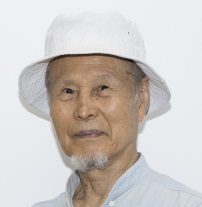
Lee, 83, calls his installations “drawings,” which is also the title of his ongoing exhibition at Gallery Hyundai.
In this exhibition, Lee presents some 50 works that span from the 1960s to the present. They include his signature installations featuring ropes arranged to form ripple patterns on a flat canvas, or attached to a wall to create a straight, sharp silhouette.
“Drawing means sketches. But these (installations) are my type of drawing,” said Lee, in a group interview with reporters last week.
Lee, with a background in sculpture, has made what he calls “non-sculptures” since the 1950s to challenge conventional forms of sculpture. He used object such as rope, stone, fabric and even his pubic hair to make installations. The 1957 “Godret Stone” is one of his earlier works, comprising a wooden bar with round stones hung with ropes of different lengths.
“There was no such thing as installation art back then. All I cared for was having my own originality. I hate to make the same things as other artists,” said Lee.
As his works looked unfamiliar to many, he was considered a “rebel” and outcast in the Korean art scene. In his first solo exhibition in 1971 in Seoul, he received responses such as, “Is this a joke?”
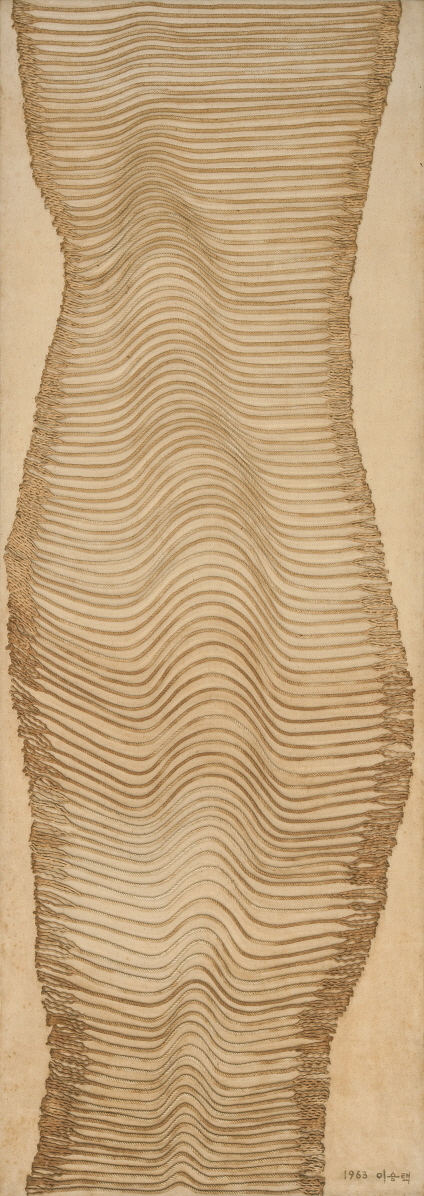
Nevertheless, he continued to experiment with new objects while making a living through commissioned sculptures.
“I must have made the largest number of commemorative sculptures in Korea,” said Lee.
He said he made some 70 statues of historic and important figures, including U.S. General Douglas MacArthur, who led the Incheon landing operation during the Korean War, and independence fighter Ahn Jung-geun.
In 2011, the artist first sold his own work at the Frieze Art Fair in New York. This year, Lee participated in the group showcase at the Marian Goodman Gallery in Paris from June to July. The heyday for the 83-year-old artist seems to have only just begun.
For more information, visit www.galleryhyundai.com.
Ha Chong-hyun, leading ‘dansaekhwa’ artist
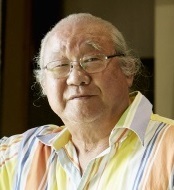
Ha, 80, has been at the center of the recent ‘dansaekhwa’ boom in the international art scene over the last couple years. Dansaekhwa, or Korean monochrome painting, has been in the international limelight with the unique painting styles and materials that emerged in the post-Korean War period since the 1950s.
Ha, recognized for his unique painting techniques, is one of the few veteran dansaekhwa artists who still actively produces new paintings. In his solo exhibition at Kukje Gallery, he presents 31 paintings that are parts of his signature “Conjunction” series, with 12 of them new.
Behind the simple, calm, monochrome visual presentations are hidden attempts that Ha has mastered for four decades since the start of the series in 1974.
Ha has explored various ways to find his own style. He substituted traditional canvas with burlap from grain sacks doled out by the U.S. military in humanitarian aid to postwar Korea. Then, he tried pushing paint from the back of the canvas, a way for the artist to challenge conventional painting methods. The oozing paint formed tiny lumps on a canvas, adding texture to the two-dimensional painting and “identity.”
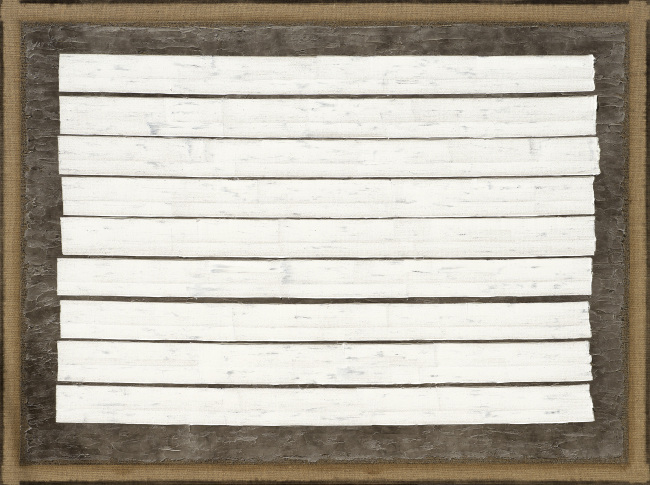
“I experimented with various ways to break away from the Western style. It has been hard to find unique ways. But I thought as the canvas and paint I used were all Western, I should make my own canvas and paint,” said Ha, during the press preview last week.
In his new solo exhibition, Ha revived one of his old painting methods, using smoke to add new shades to white paint. He exposed the white paint on the front of the canvas to heavy char smoke, which left natural shades on the surface.
“This is similar to baking porcelains in a kiln. I used the power of nature to complete the work,” said Ha.
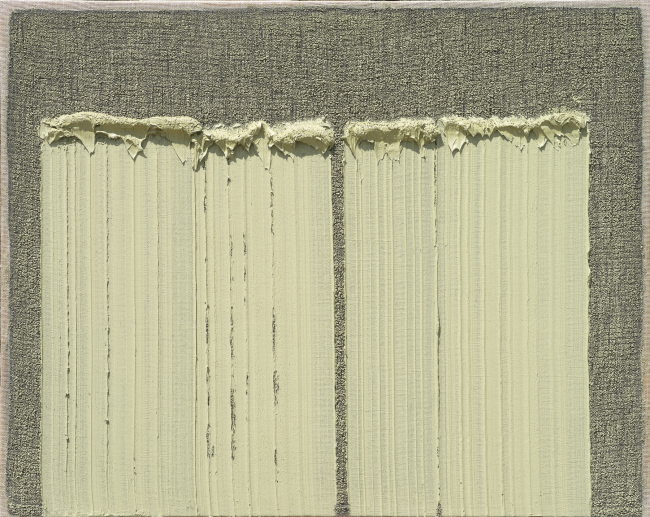
Ha recreates colors of nature. He said colors of his paintings are from familiar palettes of Korean landscape: the white of Korean traditional porcelains; the black of roof tiles from Korean traditional houses; and other darker shades of Korean soil.
“They blend well with anything -- with the burlap canvas, and with anything around us,” said Ha.
Ha is expected to receive a prestigious artist prize given by DIA Art Center, a nonprofit contemporary art center in New York in November.
For more information, visit www.kukjegallery.com.
By Lee Woo-young (wylee@heraldcorp.com)









![[Today’s K-pop] BTS pop-up event to come to Seoul](http://res.heraldm.com/phpwas/restmb_idxmake.php?idx=644&simg=/content/image/2024/04/17/20240417050734_0.jpg&u=)

![[Graphic News] More Koreans say they plan long-distance trips this year](http://res.heraldm.com/phpwas/restmb_idxmake.php?idx=644&simg=/content/image/2024/04/17/20240417050828_0.gif&u=)





![[KH Explains] Hyundai's full hybrid edge to pay off amid slow transition to pure EVs](http://res.heraldm.com/phpwas/restmb_idxmake.php?idx=652&simg=/content/image/2024/04/18/20240418050645_0.jpg&u=20240419100350)

